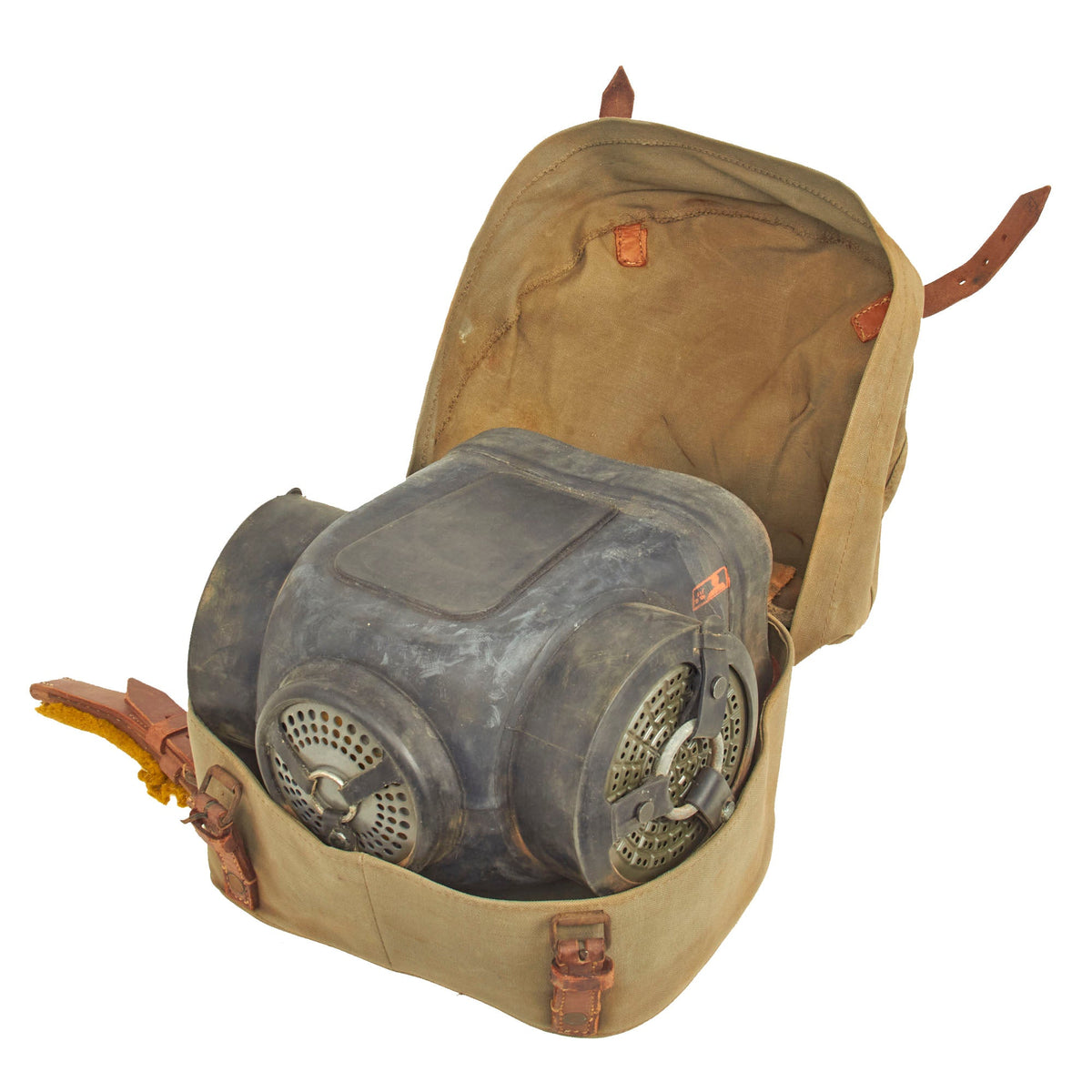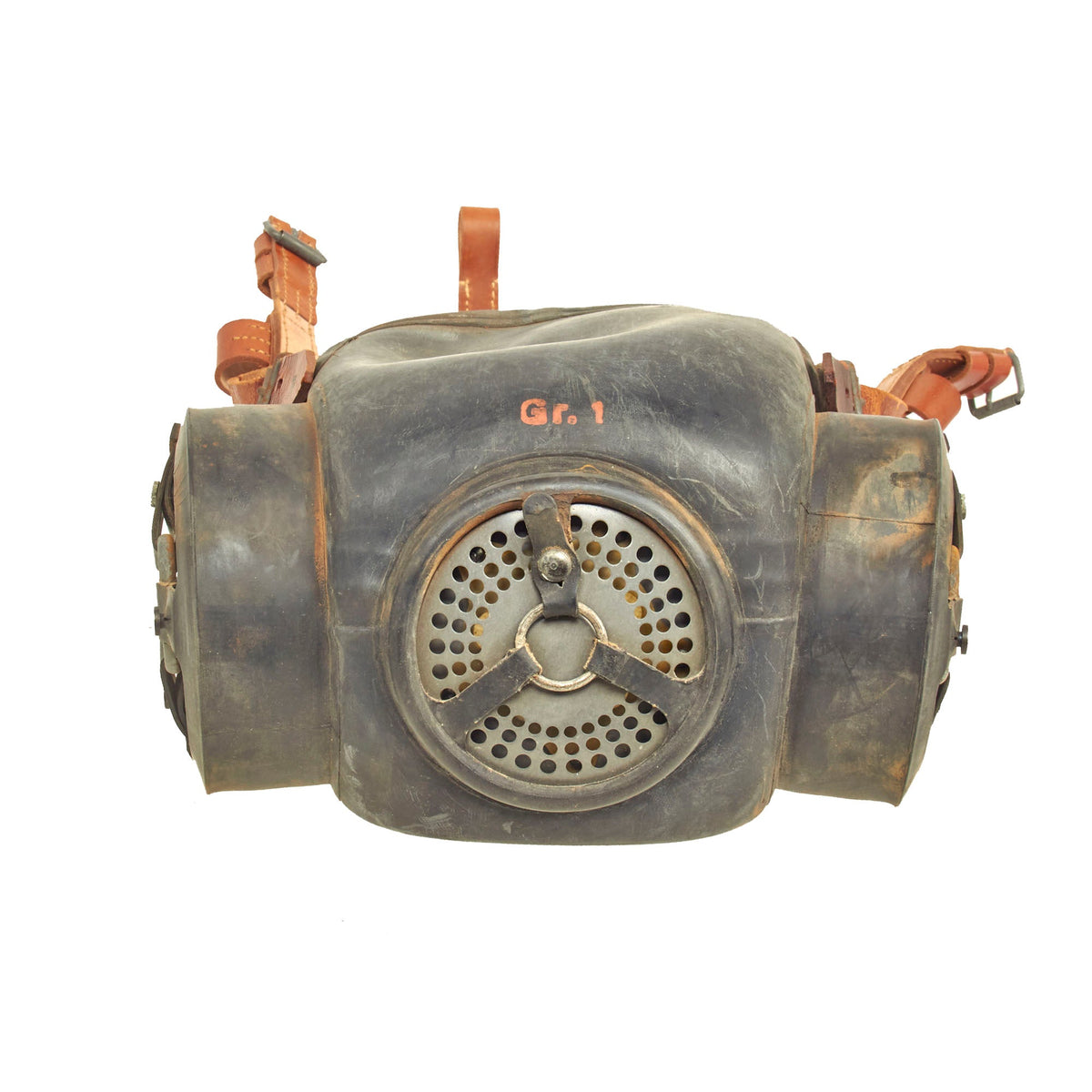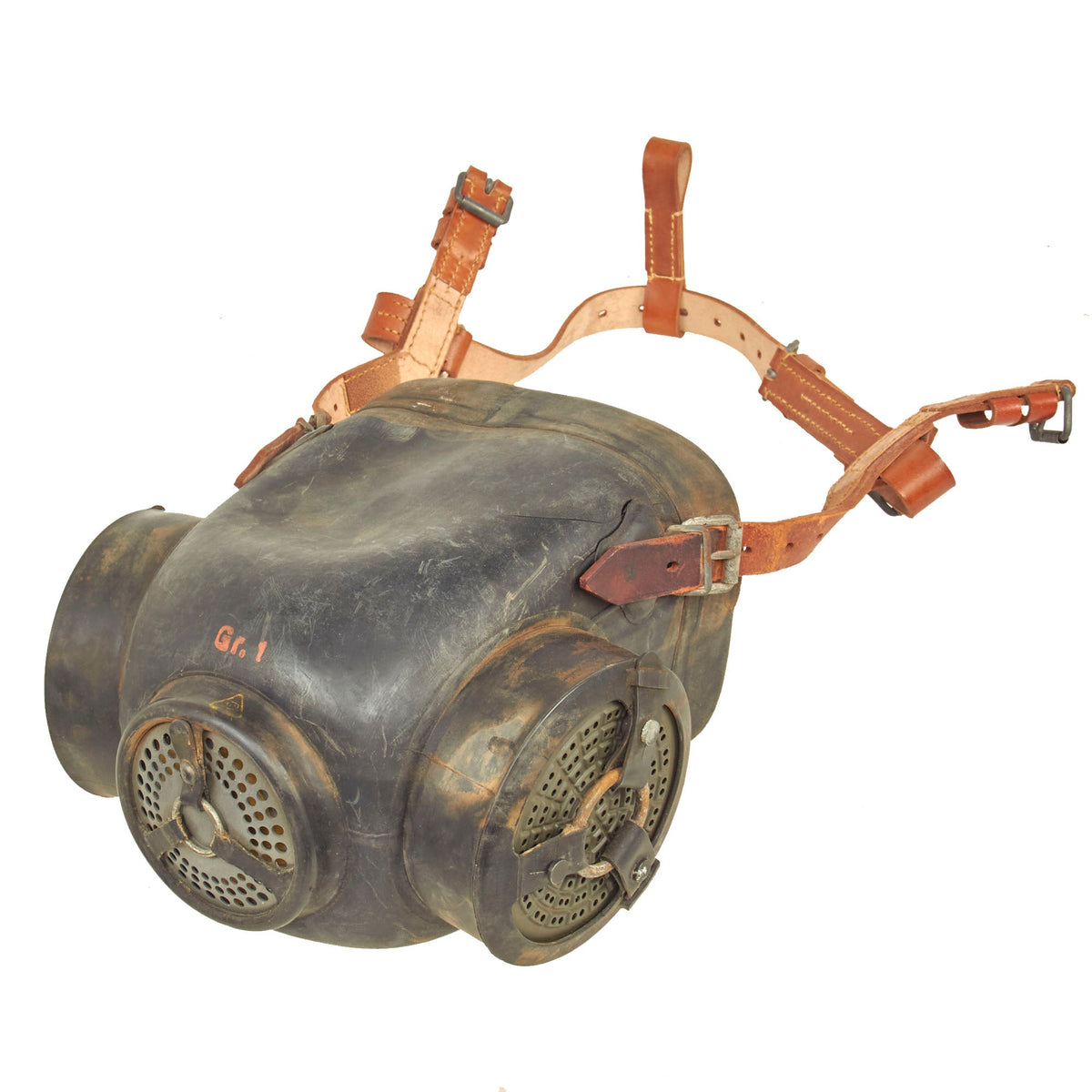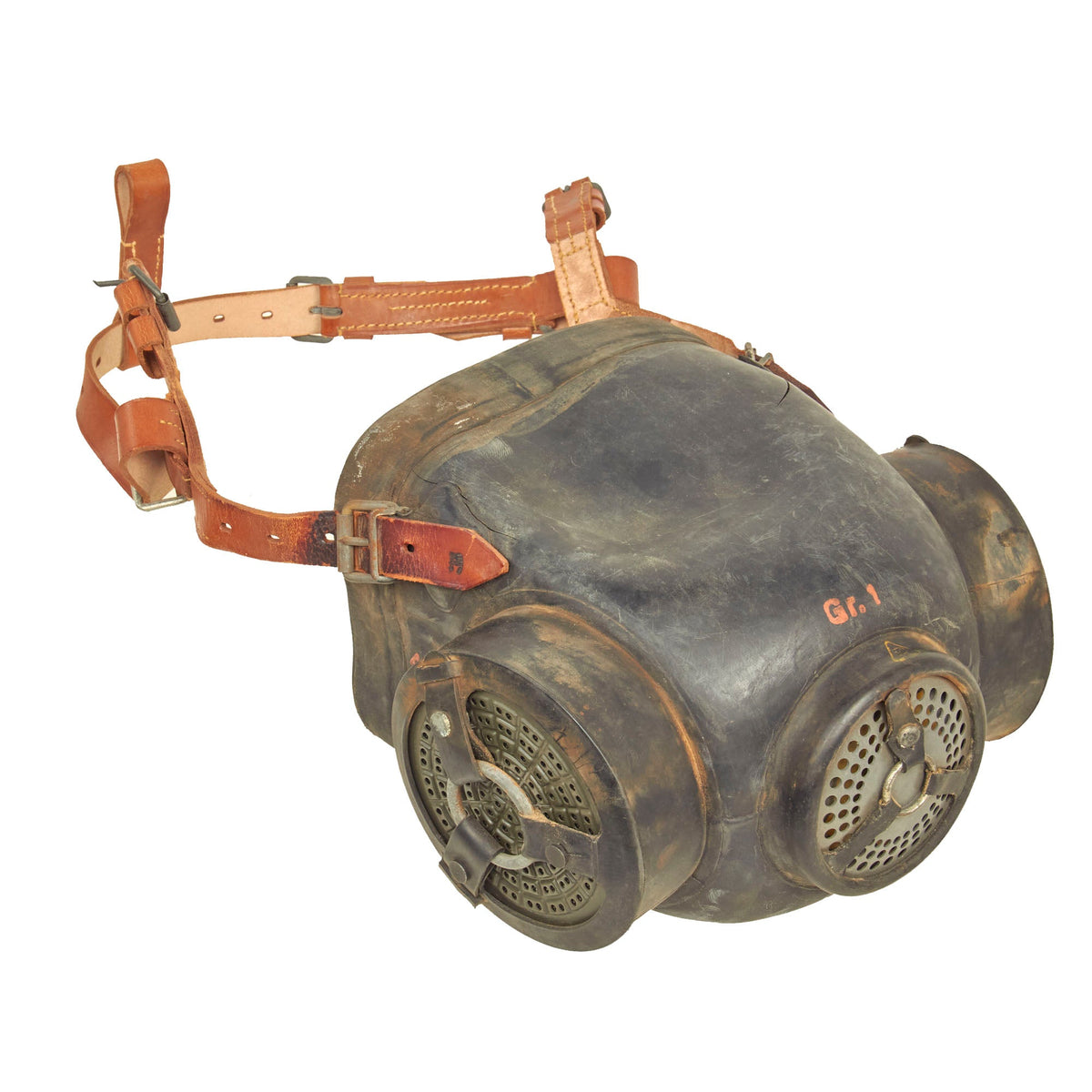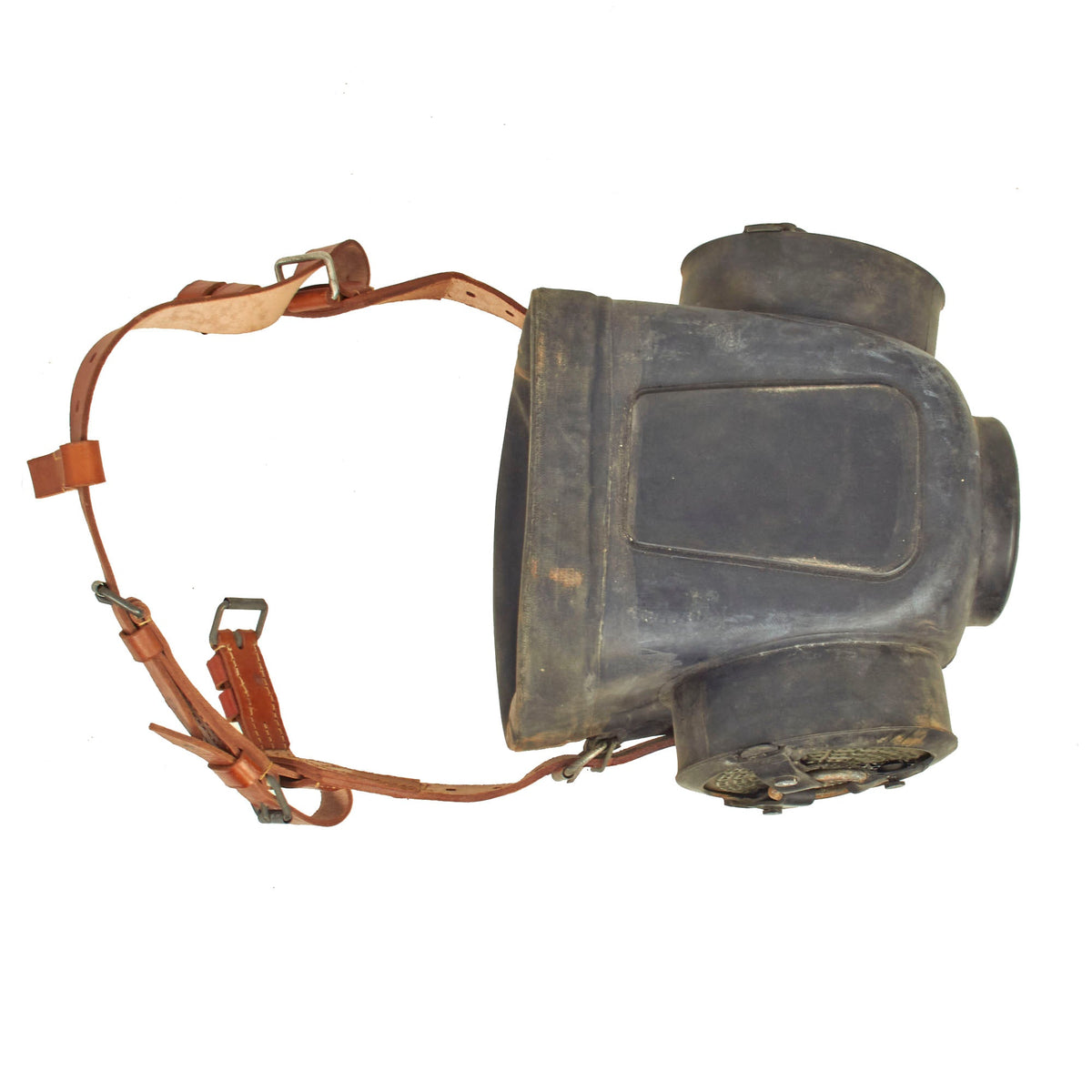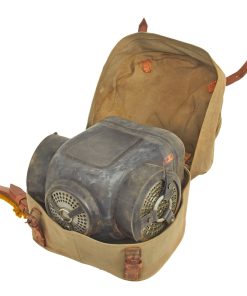Original German WWII Horse / Mule Gas Mask With Carry Case by Draeger Original Items
$ 650,00 $ 195,00
Original Item: Only One Available. This is a wonderful example of an extremely difficult to find German gas mask from WWII. This gas mask was used on the various types of horses and mules that were “employed” by the German military during WWII. Horse gas masks were first used during World War I to protect horses from harmful chemical agents. Horses were the primary mode of transporting men and material to war zones and needed protection from irritating chemicals like chlorine and phosgene, used during that time. Like most horse respirators, this mask was probably used in conjunction with a gas proof cape and leggings.
The rubber gas mask itself has no definitive markings for date of production, but we believe it to be a mid war example. There are various arsenal stamps and visible Waffenamt stamps on all of the leather pieces and a few spots of the rubber. The rubber is still soft but does have cracking present in the areas where the leather harness attaches. The canvas carry case is still in wonderful condition with working leather straps and snaps. There is a DRAEGER stamp visible on the interior of the case.
The company was founded in Lübeck in 1889 as Dräger & Gerling by J. Heinrich Dräger [de] and Carl Adolf Gerling. The first patent was taken out for a reduction device for using carbon dioxide to dispense beer. In 1902 Heinrich Dräger’s son Bernhard entered the management; from then on, the company was named Drägerwerk Heinr. und Bernh. Dräger. Since 1970, Drägerwerk has been a public limited company, or Aktiengesellschaft (AG) in German.
In 1912 Drägerwerk developed standard diving dress which did not need surface supplied breathing gas via a diver’s umbilical, as it used a self contained gas supply came from a rebreather. Two versions were available, one for oxygen to 20 metres, and the other for nitrox to 40 metres. The semi-closed circuit used the injected gas to circulate the gas in the helmet through a scrubber, providing a very low work of breathing in comparison with most other rebreathers which used the lungs of the diver to circulate gas in the loop. The bubikopf helmet was designed for use with this system. The rebreather loop hoses connected to the back of the helmet below the overhanging part, and led from there to the back-mounted scrubber.
Since 1941 Hans Hass used bag-on-back rebreathers for scuba diving, originally built by Dräger for self-rescue of submarine crews (Tauchretter; like the Davis Escape Set). The first Dräger-Tauchretter had been built in 1907. In 1926 the Bade-Tauchretter was brought into service for rescuing drowning swimmers. Draeger also held various contracts for civilian gas masks.
This is a wonderful example of a hard to find gas mask. Ready for further research and display.
Fast Shipping with Professional Packaging
Thanks to our longstanding association with UPS FedEx DHL, and other major international carriers, we are able to provide a range of shipping options. Our warehouse staff is expertly trained and will wrap your products according to our exact and precise specifications. Prior to shipping, your goods will be thoroughly examined and securely secured. We ship to thousands clients each day across multiple countries. This shows how we're dedicated to be the largest retailer on the internet. Warehouses and distribution centres can be located throughout Europe as well as the USA.
Note: Orders with more than one item will be assigned a processing date depending on the item.
Before shipping before shipping, we'll conduct a thorough inspection of the items you have ordered. Today, the majority of orders will be delivered within 48 hours. The delivery time will be between 3-7 days.
Returns
The stock is dynamic and we cannot completely manage it because multiple stakeholders are involved, including our factory and warehouse. So the actual stock may alter at any time. It's possible that you may not receive your order once the order has been made.
Our policy is valid for a period of 30 days. If you don't receive the product within 30 days, we are not able to issue a refund or an exchange.
You can only return an item if it is unused and in the same state as the day you received it. You must have the item in its original packaging.
Related products
Uncategorized
Uncategorized
Uncategorized
Uncategorized
Uncategorized
Armored Burgonet Helmet & Polearm from Scottish Castle Leith Hall Circa 1700 Original Items
Uncategorized
Uncategorized
Australian WWII Owen MK1 Machine Carbine SMG Custom Fabricated Replica with Sling Original Items
Uncategorized
Uncategorized
Uncategorized
Uncategorized
Uncategorized
Uncategorized
Uncategorized
Uncategorized
Uncategorized
Uncategorized
